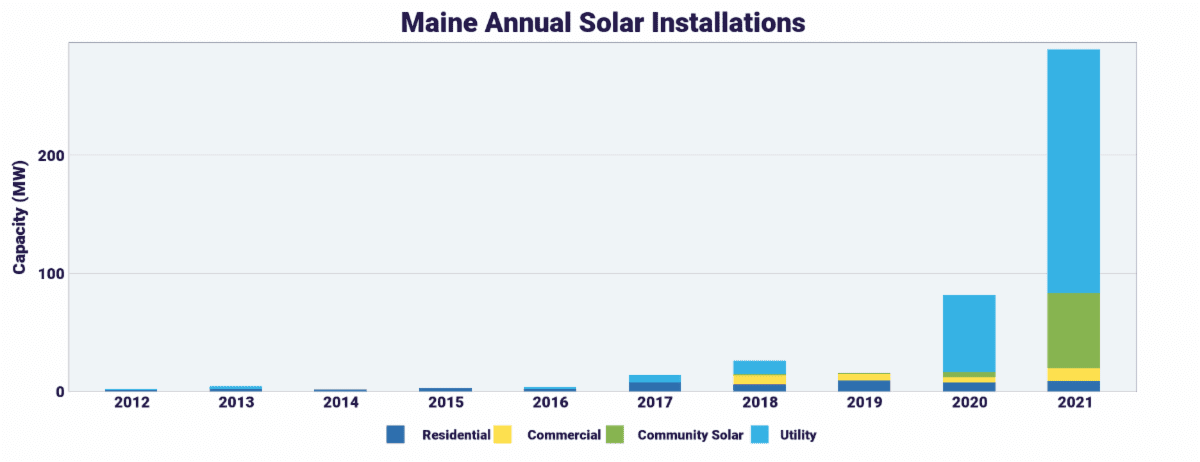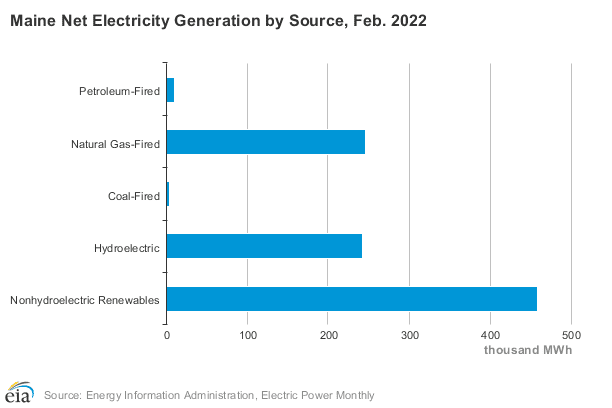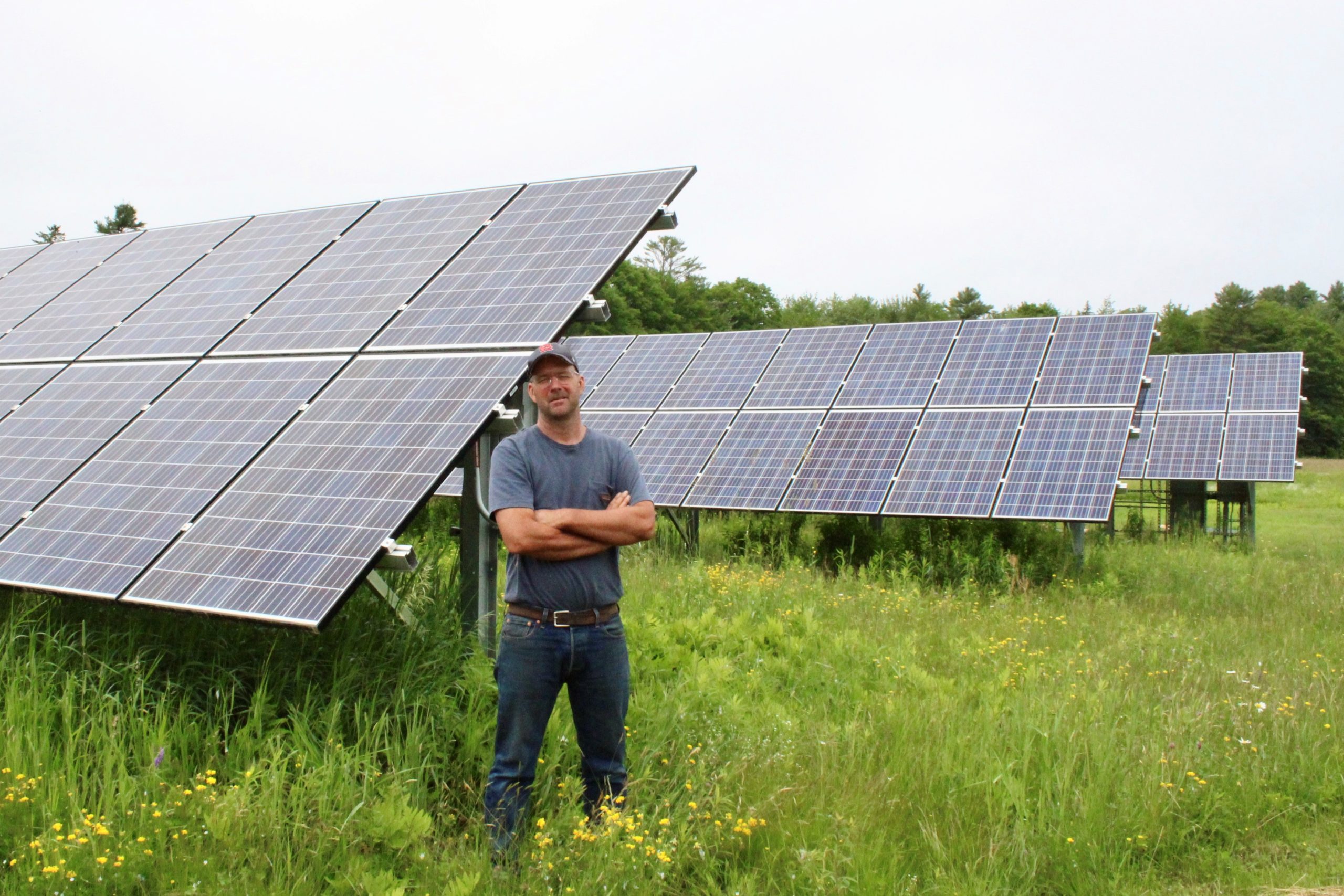Editor’s Note: The following story first appeared in The Maine Monitor’s free environmental newsletter, Climate Monitor, that is delivered to inboxes for free every Friday morning. Sign up for the free newsletter to get more important environmental news from reporter Kate Cough by registering here.
The solar installation industry got some good news when the Biden Administration announced it would implement a two-year pause on new tariffs, invoke the Defense Production Act to encourage domestic production of solar components and permit more renewable energy projects on public lands.
The domestic solar installation industry said the tariffs, which have been in place in some form since 2012 and were extended in February, would make millions of dollars and hundreds of acres of projects “unworkable,” as Robert Cleaves of BNRG Dirigo, told Maine Public.
Jeremy Payne, executive director of the Maine Renewable Energy Association, told News Center Maine that pausing the tariffs would likely help solar developers in Maine move forward with projects.
“This is very helpful action taken by the president,” Payne told News Center.
Solar installations have soared in Maine in recent years, even in the face of uncertainty over net metering payouts and long lines of projects waiting to be connected to a grid that is aging and, in many areas, at risk of being overloaded.

Maine had 486 megawatts of installed solar capacity as of this spring, enough to power 79,201 homes, according to the Solar Energy Industries Association. The state gets about 3% of its electricity from solar.
In terms of renewables, however, hydroelectric is still king in Maine, accounting for roughly 34% of the state’s renewable energy generation in 2020. Wind provided about 24%.

Maine gets a significant portion of its electricity from renewables — around 79% in 2020. That’s due in large part to hydroelectric power and biomass (energy derived from wood and wood waste) and, in recent years, wind. We also import some electricity from out-of-state.
Those figures, of course, don’t take into account the ongoing dispute about what counts as “clean” energy. Unfortunately for all of us who like to plug things in, there is no form of electricity production that does not have environmental costs somewhere along the line.
Building dams for hydro requires lots and lots of concrete, the overall production of which is thought to account for 8% of global greenhouse gas emissions; there are also consequences associated with flooding areas that weren’t flooded before. Wind turbines, solar panels and the battery systems that back them up require vast amounts of metals and minerals dug out of the earth, a process that has historically not been super environmentally-friendly and often happens in countries with lax regulations. Like siting any kind of infrastructure, the placement of them can also affect habitat and wildlife. Nuclear is really reliable (more on that below), but also comes with that pesky problem of nuclear waste. Then there’s the question of lifespan — how long will a plant or turbine or panel produce energy? 15 years? 40? 100?
And we can’t take reliability and efficiency out of the equation, which is where capacity factor comes in. The capacity factor is a measure of how much energy is actually being generated by, say, a wind turbine (or hydroelectric facility or nuclear plant or solar panel) as a percentage of how much energy that turbine could theoretically produce if it were running at full tilt all the time. The capacity factor depends on a lot of different variables, including design, location and availability of the resource (wind doesn’t always blow, sun doesn’t always shine).
Those numbers vary from between renewable generation sources. Nuclear far outstrips the competition: the nation’s 58 nuclear power plants had an average capacity factor of 93% last year, producing nearly as much energy as they were theoretically capable of. Biomass was around 64%; hydroelectric and wind were similar (37% vs 35%), and solar came in last (25%).
That means, for instance, that a solar farm rated to produce 100 megawatts will have an actual output closer to 25 megawatts, while a nuclear power plant rated to produce 100 megawatts will have an actual output around 93 megawatts.
Better minds than mine are at work figuring out what solutions work best and where, and countries are coming to different conclusions about the tradeoffs: Canada is heavily reliant on hydropower to meet its renewable goals, while Europe is split over the future of nuclear, which has long provided a significant portion of its electricity.
Where Maine winds up will depend on a variety of factors, including political and economic. We’re already seeing tension over siting new resources — New England Clean Energy Connect (a.k.a. the Corridor project), the possible wind turbine production facility on Sears Island, farmers losing land to solar — being just a few recent examples.
As Fortunat Mueller, co-owner ReVision Energy, put it during a meeting on solar siting last year: “Ultimately, these projects have to go somewhere if we’re going to achieve our energy goals.” Where remains to be seen, but the Monitor will be there to report on it when it happens.
To read the full edition of this newsletter, see Climate Monitor: The sun comes out for solar installers.
Kate Cough covers climate change and the environment for The Maine Monitor. Reach her by email with ideas for other stories at gro.r1755482505otino1755482505menia1755482505meht@1755482505etak1755482505.








